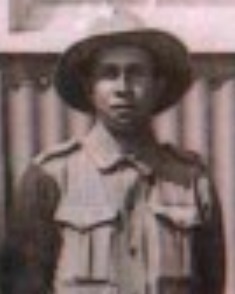CRAIGIE, Peter
| Service Number: | 2099 |
|---|---|
| Enlisted: | 30 December 1915, Adelaide, South Australia |
| Last Rank: | Driver |
| Last Unit: | 32nd Infantry Battalion |
| Born: | Roxborough Station, Queensland, 1895 |
| Home Town: | Bedourie, Diamantina, Queensland |
| Schooling: | Not yet discovered |
| Occupation: | Drover |
| Died: | Heart and Kidney Failure, Cloncurry, Queensland, 28 May 1946 |
| Cemetery: |
Cloncurry Cemetery, Qld |
| Memorials: | Bedourie War Memorial, Birdsville ANZAC Memorial Wall, Dajarra ANZAC Memorial |
World War 1 Service
| 30 Dec 1915: | Enlisted AIF WW1, Adelaide, South Australia | |
|---|---|---|
| 16 Mar 1916: | Involvement AIF WW1, Private, 2099, 9th Light Horse Regiment, --- :embarkation_roll: roll_number: '2' embarkation_place: Adelaide embarkation_ship: HMAT Anchises embarkation_ship_number: A68 public_note: '' | |
| 16 Mar 1916: | Embarked AIF WW1, Private, 2099, 9th Light Horse Regiment, HMAT Anchises, Adelaide | |
| 10 Jun 1918: | Involvement AIF WW1, Driver, 2099, 32nd Infantry Battalion |
Help us honour Peter Craigie's service by contributing information, stories, and images so that they can be preserved for future generations.
Add my storyBiography contributed by Faithe Jones
Peter Craigie was born on Roxburgh Station near Boulia in 1895 and died in Cloncurry Hospital of heart and kidney failure in 1946.
His father James (Jim) Craigie was a stockman and his mother a Pitta Pitta woman known only as Bunny.
Peter Craigie suffered from the effects of being gassed on the Western Front in the First World War, one of many aboriginal soldiers who volunteered but who remained second class citizens on their return.
In 1915, aged 20, peter was married to Daisy Muruwali Cusack in Adelaide, and the following year he enlisted as a private in the 32nd Battalion and was sent to Egypt and then onto France.
He was always a strong man, a very good boxer who could look after himself both in and out of the ring noted Olive Bohing, the oldest of Peter Craigie's surviving daughters. But he was afraid of dying over there and all he could talk about was one day getting home to Dajarra. He arrived in Marseilles in June 1916, and was a battalion driver until invalided to England in 1918 after being gassed while with a 5th Division artillery detail near Etaples.
Discharged in 1919 - an ill man but with no pension - he came back to the North West where he and Daisy had the first of 10 children while he worked as a drover. He was tied to the rhythms of a timeless land; one trip nearly 800 kms from Brunette Downs in the NT to Springvale, near Boulia, took six months, the cattle making their own pace so they could fatten along the way. It was great fattening country, said grandson Joe 'Grubby' Rogers. Great seasonal grass all the way.
During the 30th Depression there wasn't much work around so Craigie and a few mates in Dajarra decided to ride their bikes to Boulia to look for work. With no bitumen, their tyres were full of punctures, so they stuffed them with spinifex and kept going. He finally got stock work on Goodwood Station but it was taking its toll. He was crook then, and he would have good days and bad days, Olive Bohning said. According to the doctor he was supposed to eat green stuff, vegetables but out droving you couldn't get them.
Craigie was delivering a mob of bulls from Morstone station near Camooweal to what was then Vestey's Wave Hill Station, NT when he suffered his final illness. He would get off his horse and sit in the shade under a bough. His stomach was all swollen with the gas. He made it back to Cloncurry where he died in hospital.
Researched by Kim-Maree Burton and written by Ian Mackay, North West Star, April 23, 2001.












